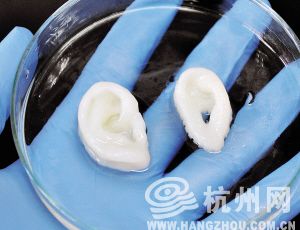Sick! China’s First 3D Bio Printer
 Printers are quickly becoming standard apparatus in biomedical engineering labs across the globe. To keep up with this trend, researchers at the Hangzhou University of Electronic Science and Technology have created China’s first domestically produced bioprinter.
Printers are quickly becoming standard apparatus in biomedical engineering labs across the globe. To keep up with this trend, researchers at the Hangzhou University of Electronic Science and Technology have created China’s first domestically produced bioprinter.The Hangzhou team, led by Xu Ming-En, built their bioprinter to operate using consecutive layers of hydrogel that can be embedded with cells. As this process happens over and over, a biomaterial is built. According to the Hangzhou team, their new printer is highly accurate, creates materials with a low cell damage rate, and has two nozzles for injecting materials at both high and low temperatures.
Fetuses!!!

If either Xu or any of his contemporaries could develop a sufficiently sophisticated bio printer, the future of organ transplants could be revolutionized. Organs, which today must be carefully matched between donor and recipient,could be built specifically for an individual.
No comments:
Post a Comment
Comments always welcome!